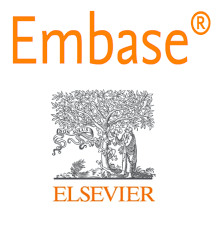CORRELATION BETWEEN SKIN TISSUE CULTURE AND HISTOPATHOLOGY IN THE DIAGNOSIS OF DEEP CUTANEOUS FUNGAL INFECTIONS
Keywords:
Deep cutaneous fungal infections (DCFI), Tissue culture, Dermatophytes, Histopathology.Abstract
BACKGROUND: The incidence of fungal infections is rising consistently on a global scale. Elderly folks and those who are immunocompromised are at risk of acquiring this condition. Fungal infections, whether cutaneous or invasive, often present as cutaneous lesions. Fungal illnesses are often diagnosed by correlating clinical symptoms with histopathological analysis, with confirmation achieved by culture. This study was conducted to determine the association between skin tissue cultures and histopathological evaluation in the diagnosis of DCFI.
MATERIALS AND METHODS: This is a 2 year retrospective review of patients with a diagnosis of DCFI seen at a tertiary care hospital. Tissue cultures and histopathologic findings were reviewed.
RESULTS: A total of 30 cases were found from the case records. The mean age was 47.76 ± 4.78 years. There were 21 Males and 9 females. 23 of 30 patients were in an immune suppressed state and 7 of 30 patients were healthy. 9 of 23 immunosuppressed patients were having Lymphoproliferative disorders and 9 of 23 immunosuppressed patients were transplanted patients. Routine histopathologic sections revealed fungal components in 8 of 33 cases, but skin cultures were negative.
CONCLUSION: We conclude that, despite a negative skin tissue culture, a diagnosis of DCFI should be considered in the differential diagnosis of nonspecific cutaneous lesions with supportive histopathology to avoid the negative consequences associated with delays in diagnosis and treatment, particularly in immunocompromised patients.
.png)









